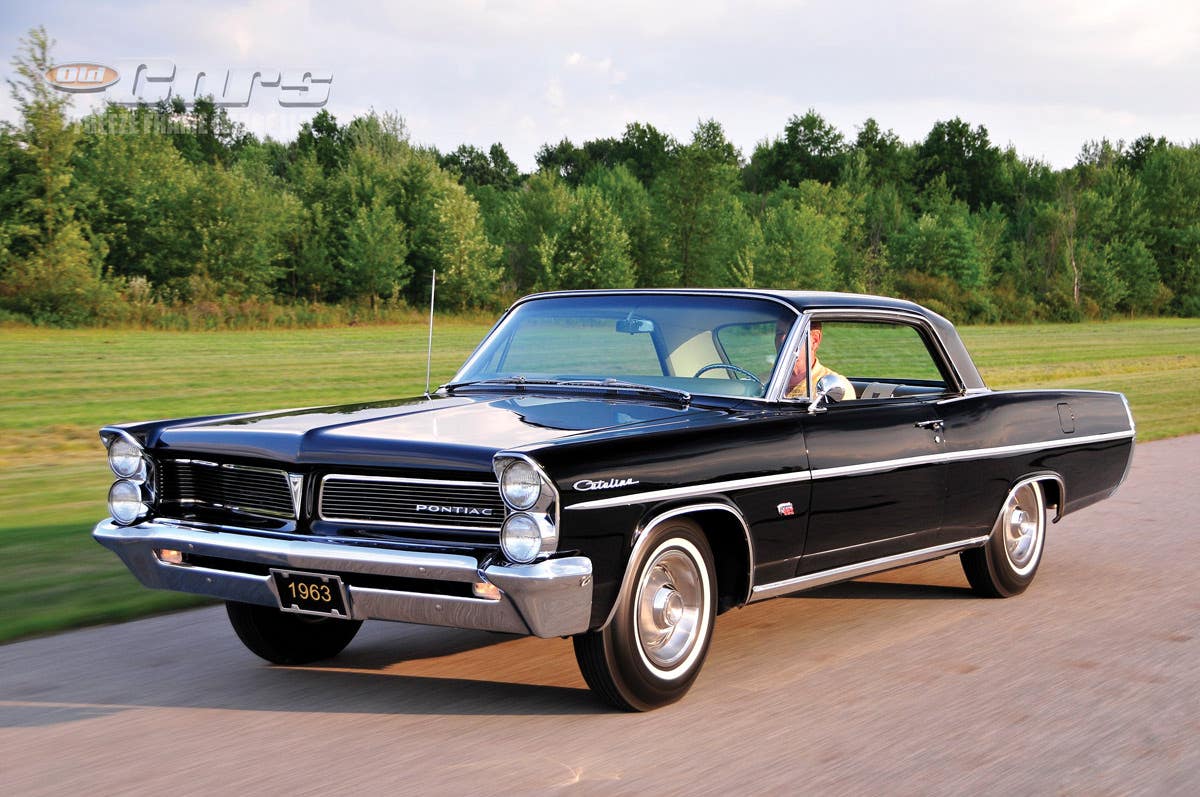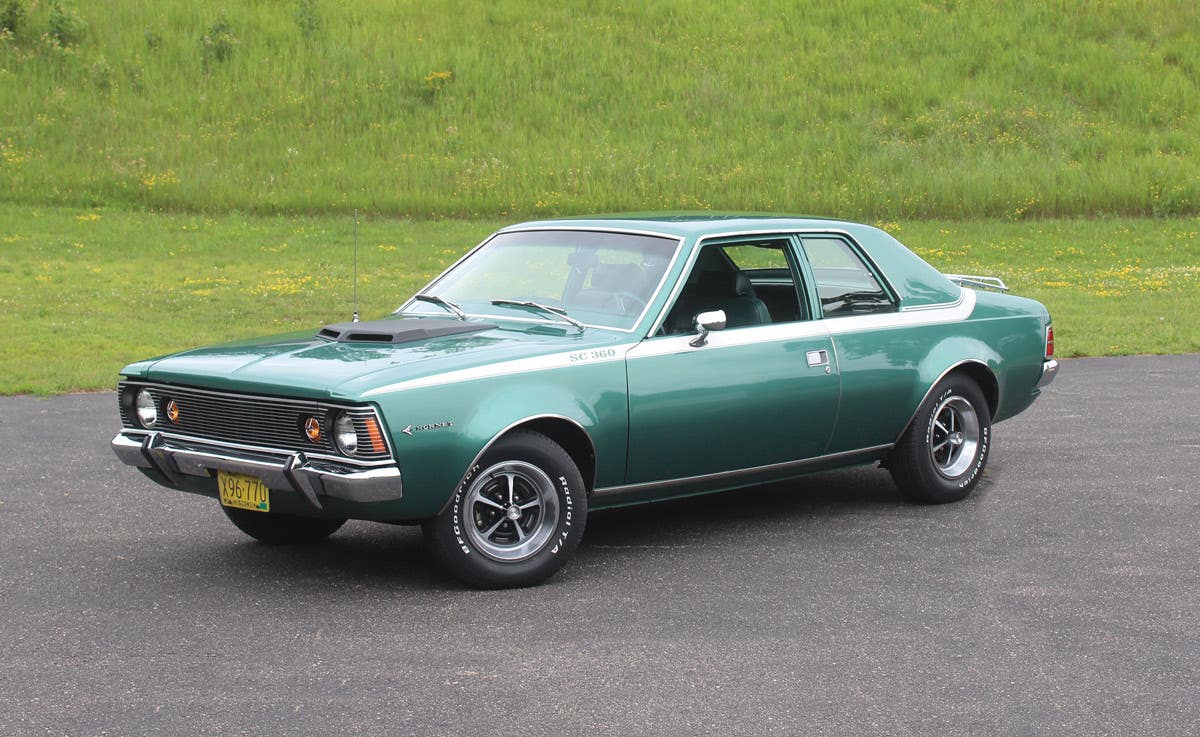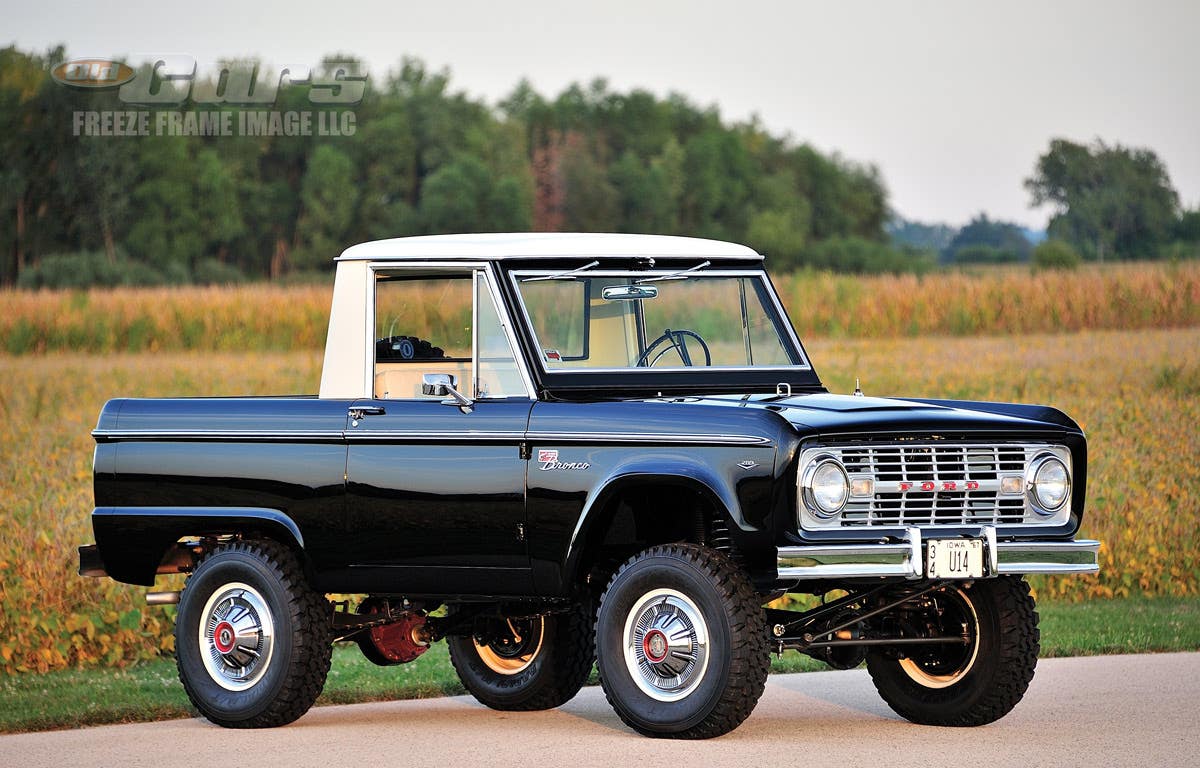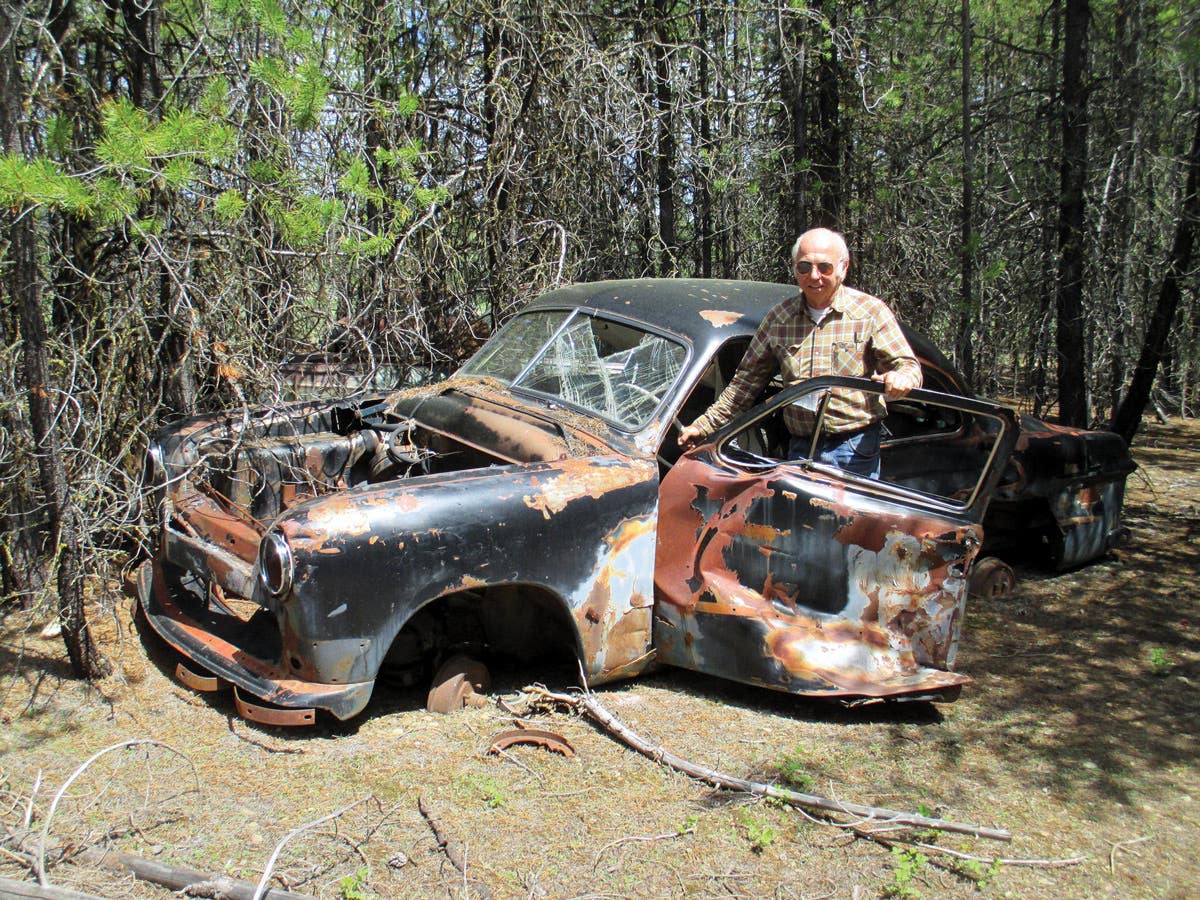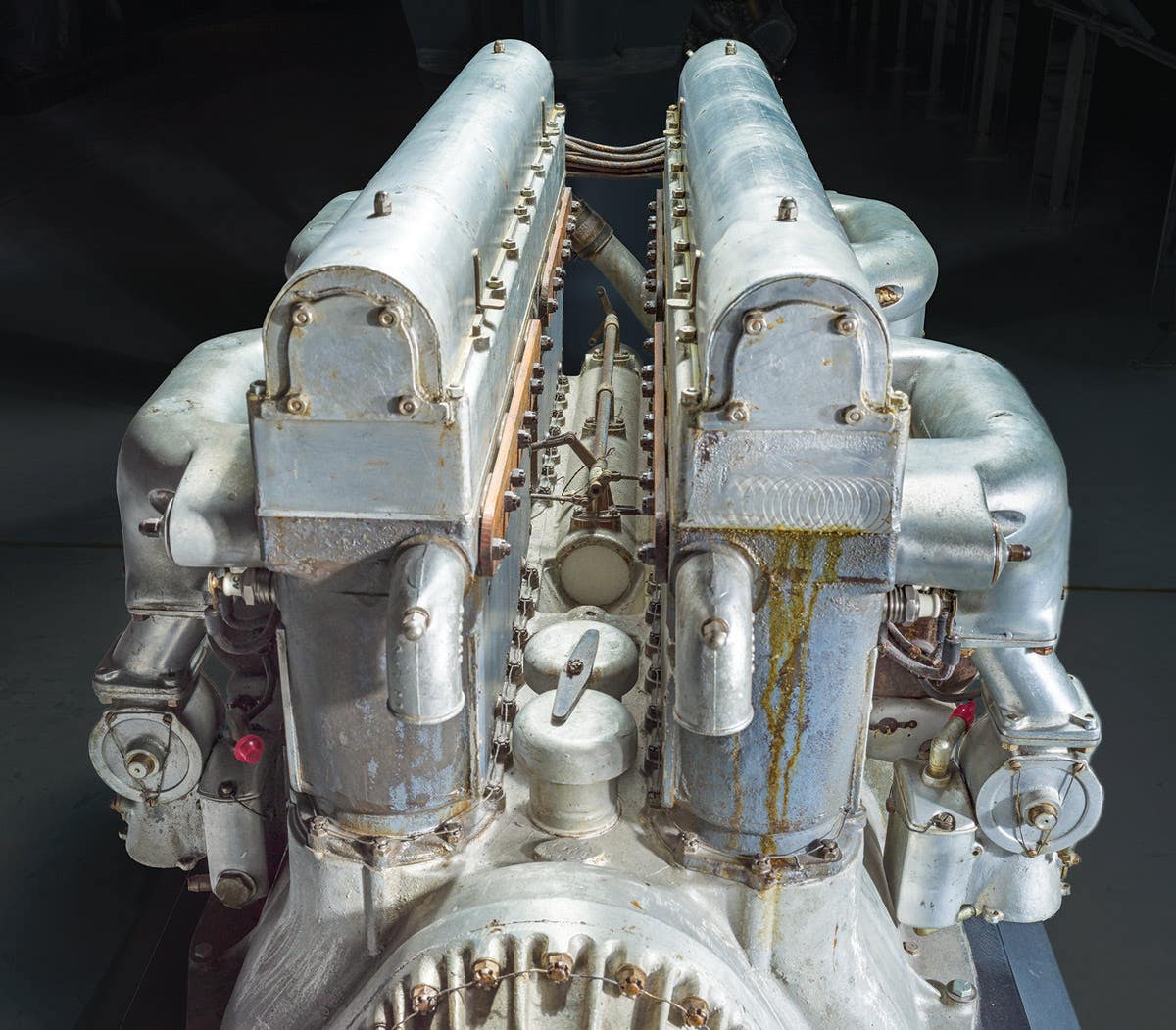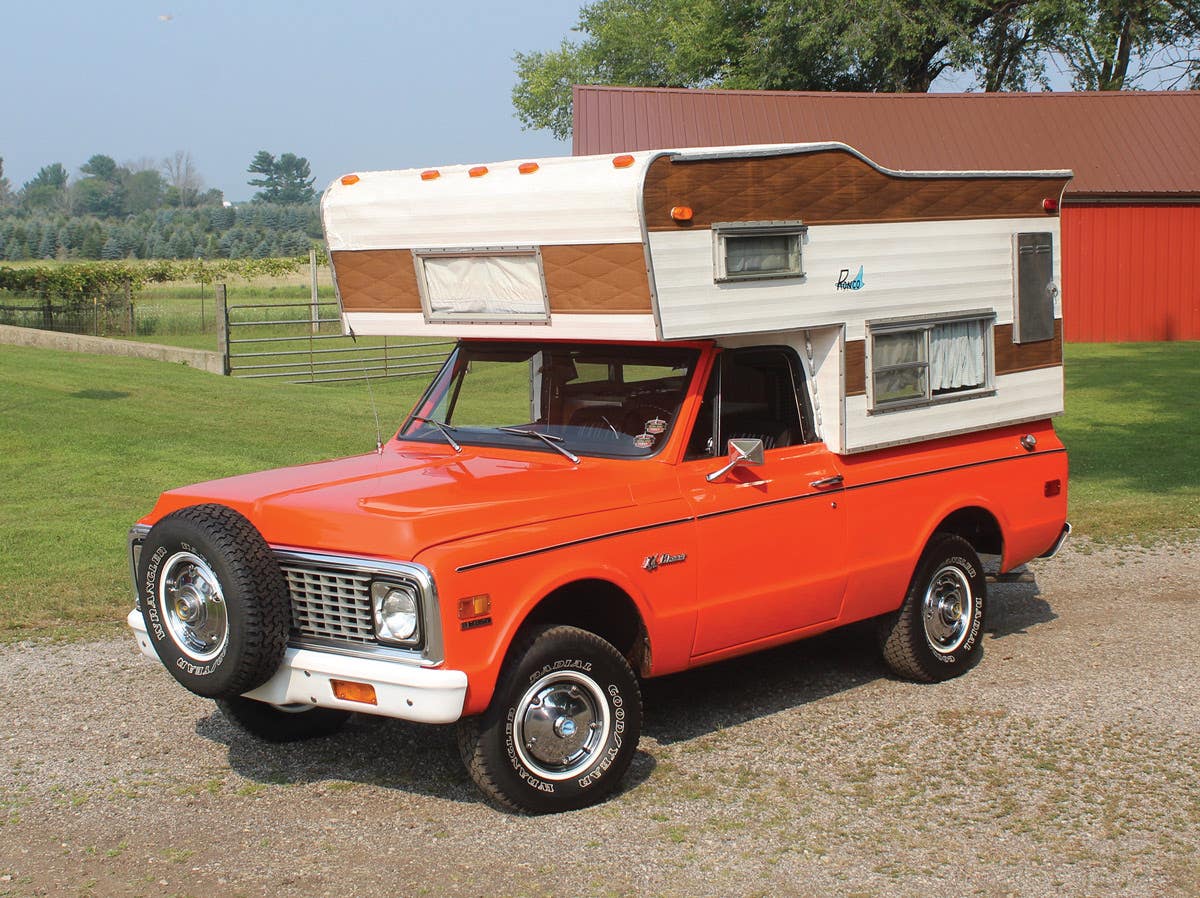Memories from ’61
A tragic Allstate story, and a race between a stick-shift Caddy and a Chevy
Story and photos by Roger Peroutka
Pictured here are my 1952 Allstate (the version of the Henry J sold by Sears) and an unusual 1955 Cadillac coupe photographed on Good Friday 1961 at the Portsmouth, Va., naval shipyard’s general parking lot.
At that time, I was in my third year of a six-year tour of the world, courtesy of Uncle Sam. I had recently purchased the four-cylinder Allstate for $70 and an upcoming trip to Pittsburgh was to be its maiden voyage under my ownership.
I never did meet the ’55 Cadillac’s owner, as he was on another ship. However, I did see the car numerous other times in parking lots and did not take any more pictures of it. I wish I had as the Allstate and Cadillac had something surprising in common — both had column-shifted three-speed manual transmissions!
An Allstate adventure
Following this parking lot “photo shoot” of my recently acquired Allstate, I — along with two shipmates from Pittsburgh — left on Good Friday to join their families for Easter. At that time, the interstate highways were being constructed, so the roads between Norfolk/Portsmouth, Va., and Breezewood, Pa., were mostly two-lane roads.
A sad part of that trip came somewhere in the mountains where there was heavy rain. A new 1960 Dodge Dart station wagon with fellow sailors aboard had passed us about a half-hour earlier. On a long uphill run between canyon walls, traffic slowed as squad and ambulances approached. We realized a jackknifed semi was blocking the road, and then we saw the horror. The front half of the Dodge was sitting intact on one side of the hill, and the rest of it was scattered on the opposite side. Sadly, all of our fellow sailors in that Dodge perished in the accident.
Following an otherwise wonderful weekend with my friend’s family, it was time to head back to the base in Virginia on Easter Sunday. My little Allstate had a flathead four-cylinder engine with a six-volt battery that looked to be bigger than the engine. Getting onto the Pennsylvania Turnpike, I saw a nice ’56 Lincoln that I thought I would hook up with. I kept up with the Lincoln for about 20 to 30 miles until I suddenly heard a big bang! from under the Allstate’s hood. The car immediately lost power. I was able to limp it to Irwin, the next exit. Once there, I looked under the hood and could see the crankshaft and part of the oil pan. The lower side of the engine block had a big hole in it. Somehow, the Allstate still ran. I pulled it to the side of a restaurant parking lot and called my friends in Pittsburgh and told them to come get it. I was able to pull it around the side of the building and said my good-bye.
I had to be back aboard ship on Monday, so Trailways got me back to the base. My friends later took the Allstate to the junkyard. I had it all of three weeks and was paid $10 for it by the junkyard.
Cadillac versus Chevy
A short while later, I was riding in the back seat of a shipmate’s high school graduation gift, a black 1960 Chevrolet Biscayne two-door sedan with a 348-cid engine and a four-speed manual transmission. “Hack’s” ’60 Chevy was the first car with a four-speed that I ever saw in person, and in a cheaper (sleeper) body style. I don’t know what carburetion the engine had; it might have been just the base 348. I know the car had the cross flags in the grille and on the trunk, and that sight alone was impressive. It had black walls, and Hack had removed the hubcaps. I think the back was jacked up a little (that was the cool look back then).
Remember the yellow 1955 Cadillac that I had earlier photographed next to my Allstate? While riding in my friend’s ’60 Biscayne, we encountered that Cadillac at a stoplight, and a street race ensued. Hack always seemed to have a problem not being able to burn rubber when he took off in his Chevy. As the light changed, Hack stood on it and the Chevy fishtailed and actually burned rubber as we pulled away from the Cadillac. Being in the back seat, I heard the Cadillac sounding like a vacuum cleaner as it quickly came along side us, then I was shocked to watch the Cadillac driver’s arm rise as he shifted that Cadillac into second gear with a column shifter! Once the Cadillac was in second gear, it laid rubber and the Cadillac pulled away from the Biscayne. We had three on board, the Caddy had two. We had gotten whipped by that big, old Cadillac!
When we returned to the naval ship that night, we told our fellow sailors how we got our butts kicked by that yellow tank of a Cadillac. Other shipmates, who frequented the local dragstrip with their cycles, said we picked on the wrong guy. They said the story was the owner ordered the Cadillac with the optional dual-four-barrel carburetor Eldorado V-8 and a three-speed standard transmission. The three-speed setup was supposedly an Oldsmobile unit, which was still available on Oldsmobiles in 1955. No one knew for sure if that was true or if he had built it himself. I did later spot the Cadillac parked in lots several other times, and it indeed had a clutch pedal (I think the clutch pedal came through the floor as opposed to being suspended). The Cadillac’s column-mounted shift lever had a big ball on the end, just like the Olds column shifter of the time. I wish I would have taken pictures of it. I never did see the owner, other than the time he kicked Hack’s Chevy.
Whatever happened to the yellow Caddy is unknown. Anyone know?
Editor’s note: Readers will certainly enjoy commenting on the manual-transmission Cadillac, so we’d like to preface responses with the following information:
The last three-speed manual transmission available in a Cadillac was 1951. Cadillac used a 331-cid V-8 from 1949 to 1955, but 331 engine blocks from 1954 to 1955 are very different at the back, and so even a 1954 Hydra-Matic won’t bolt up to a 1955 engine and vice versa (I tried). So, presumably a 1950 block is different at the rear from a 1955 block.
That said, perhaps the ’55 Cadillac owner in the preceding story used a 1950 or so Cadillac engine with a Cadillac manual transmission and installed the ’55 Cadillac heads, manifolds, carburetors, etc., to complete the transformation. It’s also possible the car had a contemporary Oldsmobile transmission that either bolted up to the Cadillac engine, or an aftermarket bellhousing adapter was used in the conversion. Too bad we’ll probably never know for sure!
If you like stories like these and other classic car features, check out Old Cars magazine. CLICK HERE to subscribe.
Want a taste of Old Cars magazine first? Sign up for our weekly e-newsletter and get a FREE complimentary digital issue download of our print magazine.



